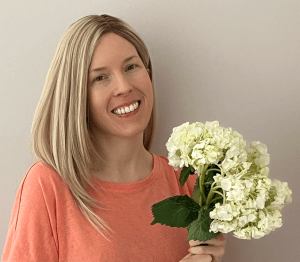
Please see Part 8 of the series here.
Born from some excellent, evidence-based research on emotional regulation, the N.E.S.T. mindfulness skill helps you be more kind and generous to yourself as you cope with unproductive thoughts, feelings, and reactions. (To remember this technique, I always think that the skill asks me to create a nest – a loving, comforting home – for my brain during times of extreme worry.) The N.E.S.T. technique should be used for particularly excessive or intrusive thoughts/emotions that your brain just cannot quite seem to let go of. To do so, it asks you to explore the intrusive thought or emotion and create an action plan for moving forward. Let’s look more deeply at it:
Nurture
Imagine that in the business of being an entrepreneur, you repeatedly have an intrusive thought about a founder in your same commercial space. Whenever you think of this other founder – and this is often – you feel seared by jealousy and excessive social comparison. To nurture yourself means that you recognize, accept, and identify how this intrusive thought appears within your mind and body (thank you R.A.I.N. / Part 6!), and then also to tell yourself that it is completely normal, human, and routine to have these sorts of thoughts. That is, there is nothing deviant about your thoughts about the other founder, nor is there anything particularly harmful, other than the loss of time you spend going over the same feelings again and again. Your goal in this step is to recognize that you need to nurture yourself when having these thoughts, rather than pity yourself, beat yourself up, or deploy some other internal regime that denies your feelings. It also kindly allows you some space to process these intrusive thoughts.
Evaluate
Now that you recognize, accept, and identify how these jealous thoughts of that other founder make you feel, rather than disidentify from the thought process (which are valid techniques we learned earlier), the alternative is to approach the feeling from a different stance: from a highly analytical, strategic posture. The pertinent question here is: what is the core need I need met that seems to motivate this habitual, intrusive jealousy I feel, and what are my options for meeting my core need? In this way, you evaluate how to address an underlying need that may otherwise be a live wire, catching your jealousy emotion aflame. Perhaps you have an underlying need for validation – that your business is worthy, that it makes a difference, that it serves a specific function, or whatever validation means to you. Maybe, instead, you have any underlying need for admiration – you want to be so successful that others admire you, want to emulate you, and not necessarily in an egotistical way – you really want to be a role model and hold your own behavior to high standards to achieve this goal.
Once you identify the need that sparks the intrusive thought/emotion flame, you must evaluate your options. Let’s run with validation – you would ask yourself, what do I need to feel validated in my role as an entrepreneur? The options could include things like giving back (e.g., talking to more junior founders about your experience), like seeking positive press (e.g., giving an interview that raises your profile while also disseminating worthwhile information to the industry), or like investing in meaningful relationships (e.g., really investing in a friendship that makes you feel, mutually, like your best self).
Set an Intention
In the next step, you must pick one of the options you evaluate, and, with commitment and discipline, step forward. Here try to keep an experimental mindset so that you do not overthink which step to take – pick a path, try it out, see what happens. The ironic thing about intrusive thoughts is that they likely will appear again, so you will have another opportunity to try a different intention if your first (second, third) pick does not work!
Take Action
Finally, execute your intention. This means investing some time in planning when, where, and how to execute and intention and then actually taking resources away from other things and applying them to the intention. In the above example, let’s say you really did want to spend more time on a meaningful friendship as a way to meet your validation need. As you take action, you must commit to those Thursday afternoon leisurely coffees, fending off pressure to cancel to take a meeting, to travel, or any other (reasonable) excuse to not follow through.
The N.E.S.T. technique should be used with discretion: not every reoccurring, intrusive thought/emotion/urge needs this level of analysis, but instead only your most intrusive and most lingering bouts of unproductive cognition. If used excessively, it will be used like a backdoor into giving a relatively minor thought/emotion/urge more attention than it deserves, potentially increasing its power. That said, the kindness embedded in this technique is a deeply compassionate way to support your brain as it copes with unrelenting pressure. Kindness begins when you set aside time to really contemplate what ails you; it continues as you forgive your mind for acting to create so much discomfort; and it concludes by giving yourself space to consider what your core needs are and how you might take the reins of personal responsibility to address them.
Up Next:
We’ve covered how to cope with negative, intrusive patterns of the mind. Next, this series concludes with a look at the generative power of mindfulness with respect to creativity, a core responsibility of successful entrepreneurs.
Mindfulness Exercise:
Consider a particularly re-occurring thought pattern you find yourself entrenched in and apply the N.E.S.T. technique. I suggest writing out each step as you take it, as well as listing out at least three options to evaluate. You might even consider doing this exercise with a trusted friend as mutual inquiry about core needs can often lead to deeper insights.
Questions?
Reach out to Professor Grace Lemmon at glemmon@depaul.edu if you have questions about this post. Or, if your company is interested in applied mindfulness training, Professor Lemmon is happy to connect with you through collaboration with DePaul University Executive Education. Thanks!
This is Part 9 in the Spring Cleaning for the Entrepreneurial Mind Series by Associate Professor Grace Lemmon.
- Read 8: Mindfulness to Improve Impulsivity
- Read 7: Mindfulness to Improve Entrepreneurial Decision-Making
- Read Part 6: How Entrepreneurs Can Use Mindfulness to Shift Toward Growth-Oriented Thinking
- Read Part 5: How Entrepreneurs Can Use Mindfulness to Shift Away From Mindless Thinking
- Read Part 4: How Entrepreneurs Can Use Mindfulness to Shift Away From Ruminative Thinking
- Read Part 3: Habits of the Mind
- Read Part 2: Why should entrepreneurs be mindful?
- Read Part 1: What is mindfulness, and what is its basic practice?

Grace Lemmon is an Associate Professor in the Department of Management & Entrepreneurship in the Driehaus College of Business. A research expert on topics related to stress management, including burnout, engagement, work detachment and work recovery, Professor Lemmon is particularly interested in how people develop more fulfilling relationships with work through value alignment. One of her most popular course is The Mindful Leader, which explores how to apply mindfulness to be a better leader of others and oneself.
